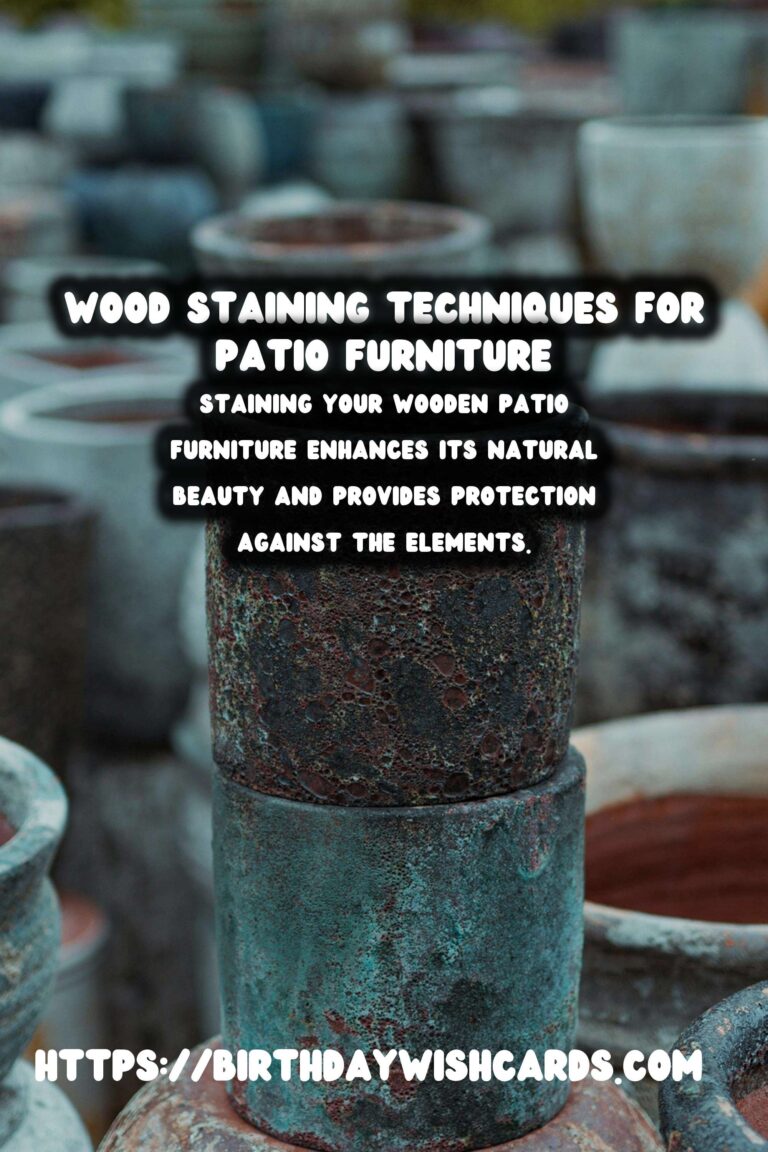
The arrival of summer often inspires homeowners to refresh their outdoor spaces, and one of the most effective ways to do this is by giving your patio furniture a makeover. If you have wooden patio furniture, staining it can breathe new life into your outdoor decor. In this comprehensive guide, we’ll explore the process of wood staining, discuss the best practices, and offer tips for achieving a professional finish.
Why Stain Your Patio Furniture?
Staining your wooden patio furniture offers several benefits. Firstly, it enhances the natural beauty of the wood by highlighting its grain patterns and rich textures. Secondly, wood stains provide a layer of protection against the elements, such as UV rays, moisture, and mildew, ensuring your furniture lasts longer. Lastly, staining is a cost-effective way to update your furniture without the need for replacement.
Choosing the Right Stain
Before you begin the staining process, it’s crucial to choose the right type of stain. There are two main types of wood stains: oil-based and water-based. Oil-based stains penetrate the wood fibers deeply, providing long-lasting protection and rich color. They are ideal for chairs and tables that will be exposed to the sun and rain. Water-based stains, on the other hand, dry faster and have lower levels of volatile organic compounds (VOCs), making them a more environmentally friendly option. They are suitable for furniture kept under cover or in shaded areas.
Preparation Steps
Proper preparation is key to a successful staining project. Start by cleaning your furniture thoroughly to remove dirt, dust, and old finishes. Sand the wood surface to create a smooth base for the stain. If there are any cracks or holes, fill them with wood filler and sand again once dry. Ensure the furniture is dry before proceeding to apply the stain.
Applying the Stain
When applying stain, use a brush, rag, or sponge, depending on your preference. Work in small sections, applying the stain in the direction of the wood grain. After applying, allow the stain to penetrate for the recommended time on the product label, then wipe off any excess with a clean cloth. Let the stain dry completely before applying additional coats if a deeper color is desired.
Finishing Touches
Once the stain has dried, apply a clear sealant to protect the finish. This will enhance the stain’s durability and provide an additional layer of protection against the elements. Options for sealants include polyurethane, varnish, or a natural oil finish. Choose a sealant that complements the type of stain used.
Maintaining Your Stained Furniture
To keep your newly stained furniture looking its best, regular maintenance is essential. Clean the furniture periodically with a mild soap solution and a soft cloth. Check for signs of wear and reapply stain and sealant as needed to maintain the protective layer. Cover or store your furniture during harsh weather to extend its lifespan.
Conclusion
With the right preparation and materials, staining your patio furniture can be a rewarding DIY project that transforms your outdoor space. By following these guidelines, you can achieve a professional-looking finish that enhances both the beauty and longevity of your wooden furniture. Embrace the summer season with confidence, knowing your patio is ready for relaxation and entertainment.
Staining your wooden patio furniture enhances its natural beauty and provides protection against the elements. Choosing the right type of stain, whether oil-based or water-based, is crucial for the project’s success. Proper preparation, including cleaning and sanding, is key to a successful staining project. Applying the stain in the direction of the wood grain ensures a professional finish. A clear sealant protects the stained furniture and enhances its durability. Regular maintenance, including cleaning and reapplication of stain, extends the furniture’s lifespan. 
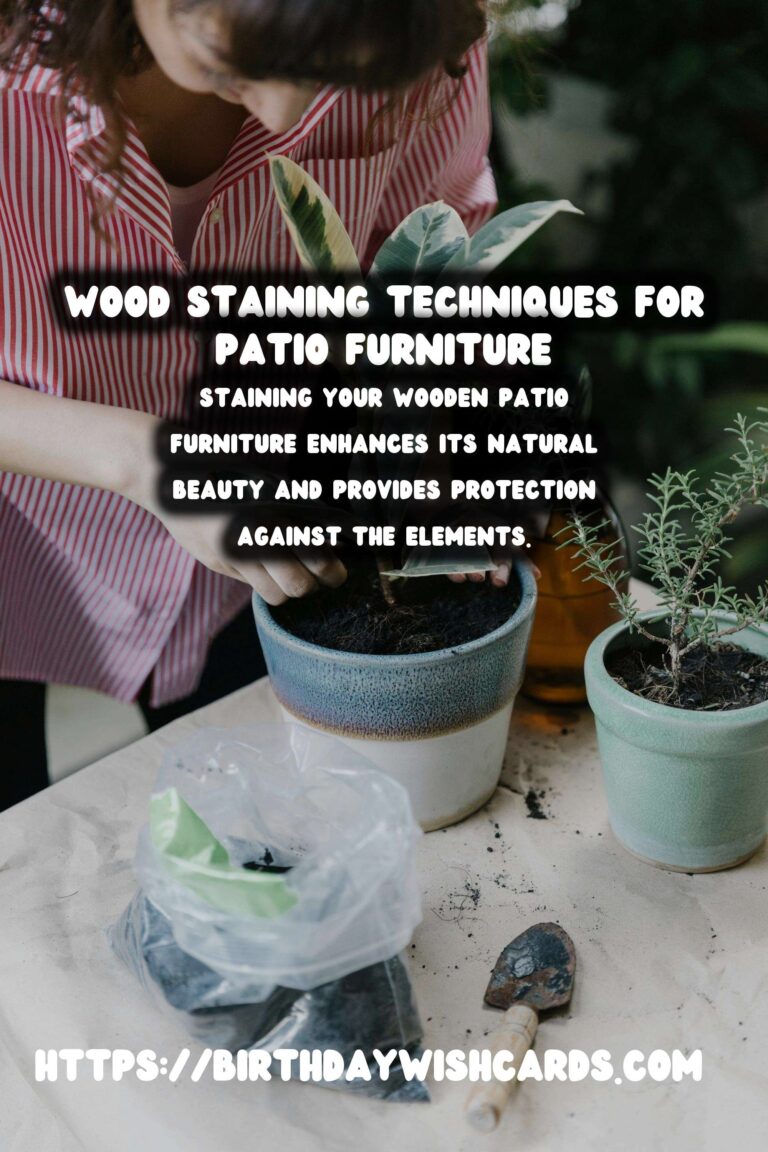

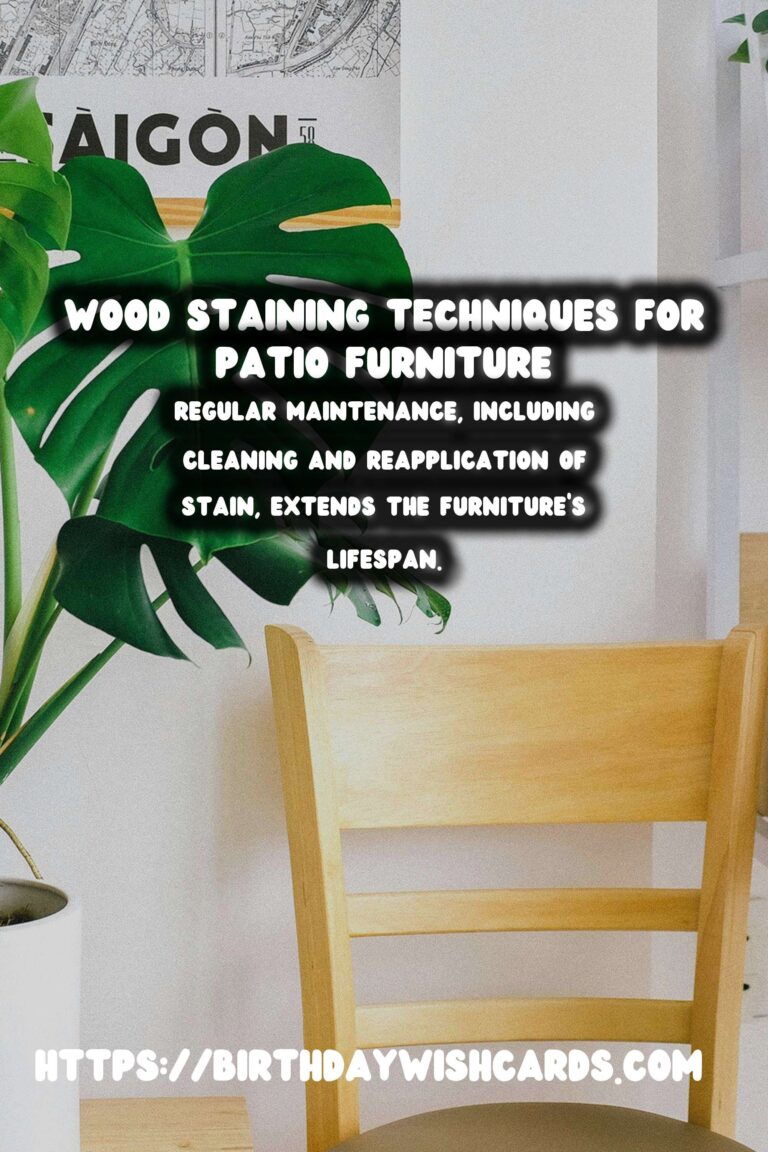

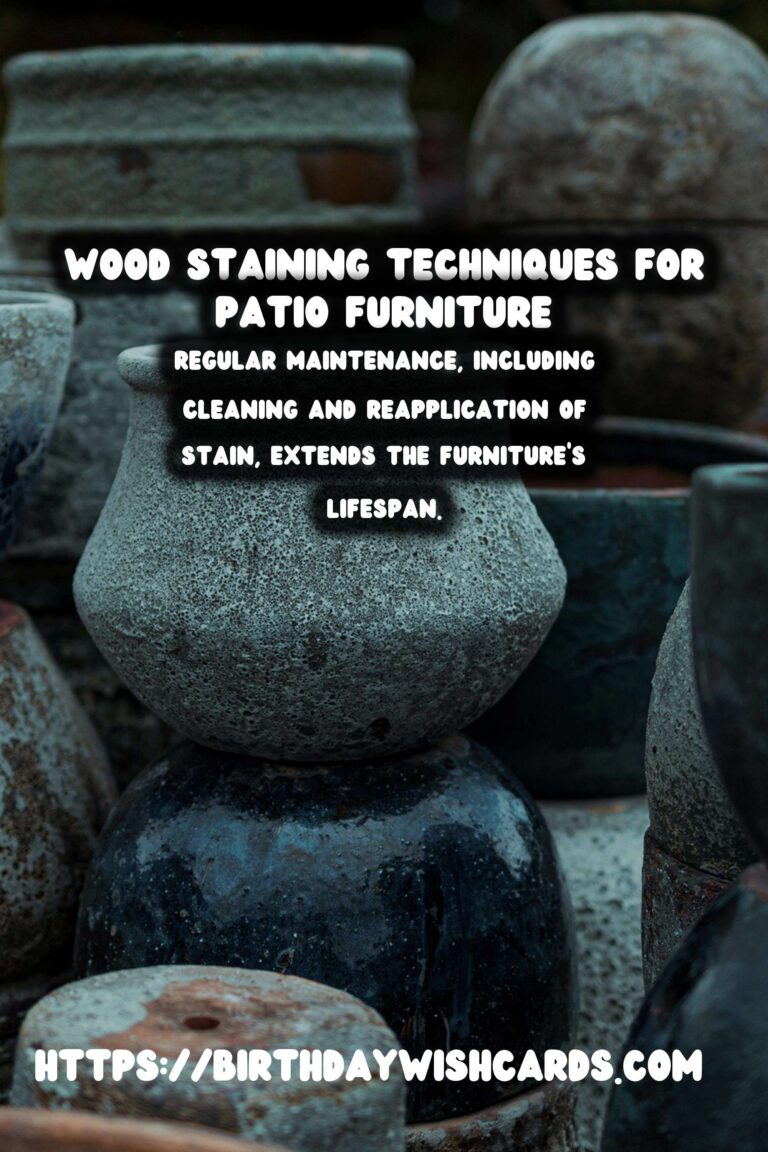


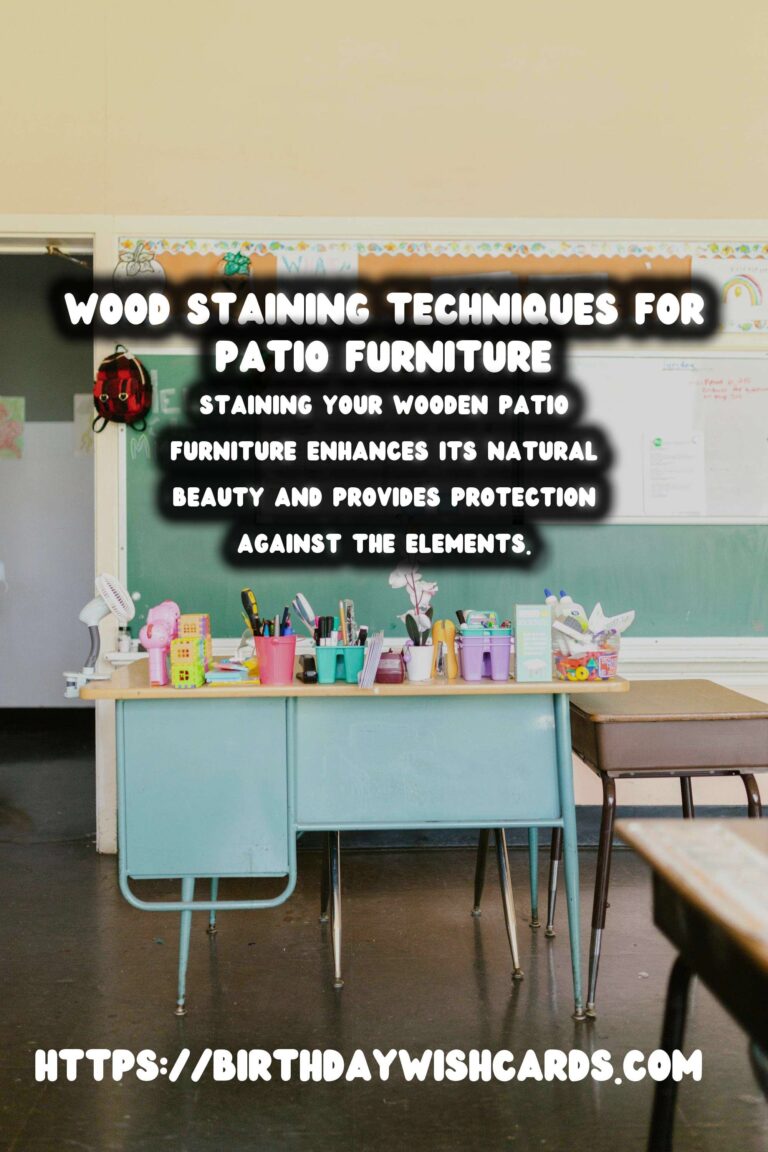

#PatioFurniture #WoodStaining #DIYHomeProjects #OutdoorLiving




